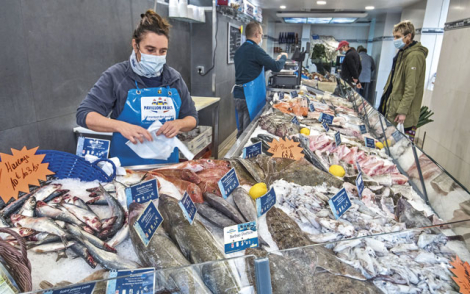|
Exemples Luca Doria Paulina Jarmuszka Ana Padin |
“We need to prove that packaging is not just redundant and that reducing the use of plastic is not enough.”[nbsp] With these words, Gonzalo Campos, seafood marketing manager at Sealed Air opened the day dedicated to «seacuterie» in his recent Packforum in Milan. “The customers’ relationship to proteins is changing and seafood products have a card to play,” he said, “especially regarding snacking. Sushi and salmon have paved the way by diversifying the moments of the day they are consumed.” At the same time, new expectations are emerging, particularly in e-commerce. “We noticed a lot of shopping was done on the net, including for fresh products. The growth of in-store catering should also be promoted.” These are all parameters which are boosting the market for convenience products (ready-to-cook or ready-to-eat) throughout Europe and favour a form of snacking which has regained a little bit of prestige. In other words, the point is not to gulp down junk food in the blink of an eye, but quite the reverse, elaborate, even sophisticated products which combine sustainable production and organoleptic quality. Packaging, with its technical function, participates in these developments, offering both the protection of a fragile product, but also extension of shelf-life, and convenience for logistics and consumption. It is even in line with the trend of the «clean label» concept, by making it possible to reduce additives and preservatives. “Films and trays are not single-use plastics, but essential food protection with high added value,” continues Kai Oltmann, Marketing general manager, while admitting there is a problem of waste collection although opportunities to create a circular economy are real. If complex barrier films are not recyclable, there is an increasing potential for associations with rigid, recyclable or recycled monomaterials. Suppliers have been committed to eco-design for 15 years, with significant reductions in film thickness, down to 20 microns. Another argument is the fight against food waste. In the chain between production and consumption, skin packaging, one of the strong points of Sealed Air’s development, seems to permit the reduction of losses. This technology also offers the advantage of permitting a wide range of marketing arguments: transparency, printing... Here, the product can be customized to become attractive. The visit to the showroom in Milan is significant: cephalopods to be reheated, cooking in tinfoil, sushi trays... The highlight being the vending machine in “fresh”. A “fillet + vegetables” portion, under skin and “easy peel” to be put in the microwave. Sealed Air is associated with equipment manufacturers to offer global solutions. Dominique GUILLOT |

